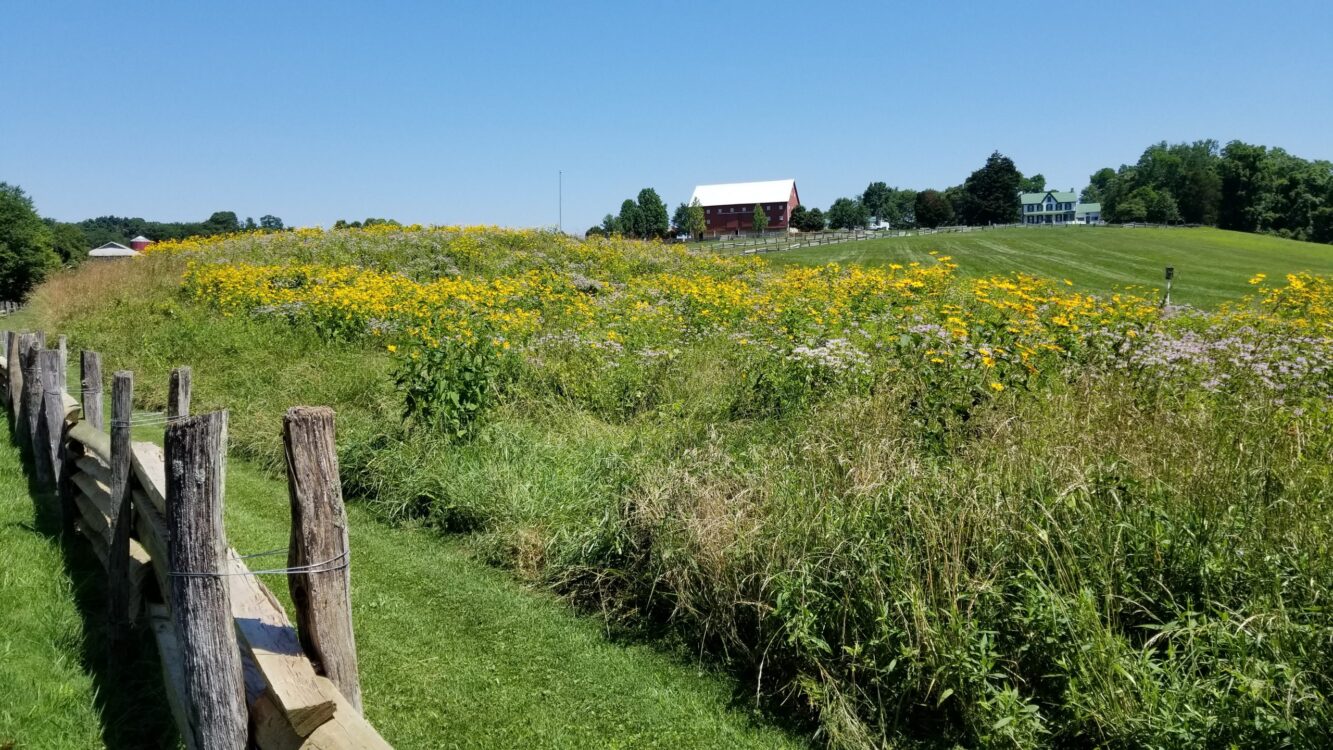
What is the meadow management program?
A meadow is a plant community composed almost entirely of herbaceous plants and some shrubs. Protecting these natural habitats allows native plants, insects, birds, and mammals to flourish and enrich the local environment. The goal of the meadow management program is to protect these natural habitats with minimal disturbance by staff. Occasional spot mowing and the use of brush cutters or chainsaws are used to control non-native invasive species and keep woody vegetation low or out of mead/ow areas. If these areas are not managed, they would revert to forest or be overrun by non-native invasive plants, and eventually, native plants and animals would be eradicated from the area.
What is meadow restoration?
When an area has become to overrun with non-native invasive plants or woody vegetation it may need to be restored. Meadow restoration is the process of removing unwanted vegetation and replacing it with desirable native species that will allow for a greater diversity of plants and animals.
In general, meadow restoration follows three steps: site preparation, planting, maintenance.
- Site preparation includes removal of non-native invasive, and removal of the existing duff layer.
- Planting can be done by a seed and compost mixture, hydroseeding, no-till seed drill, planting plugs, or a combination of all three.
- The site is maintained by keeping growth for the native plants at six to eight inches tall until early July for the first two years. This allows the native plants to establish roots while preventing non-native invasive plants from establishing and seeding before the native plants are tall enough to outcompete them for resources such as sunlight and water.
A meadow can take anywhere from two to five years to fully establish itself depending on the quality of site prep, seed germination, and site maintenance during establishment. While a site is being established it may look dead, barren, or even run down. This is normal and part of the process because native plants take longer to establish than some invasive plants.
The final product will be a diverse community of native grasses and wildflowers which will support a greater diversity of insects including pollinators and associated wildlife such as native birds that utilize meadows for part or all their life cycle.
The steps Montgomery Parks is taking to minimize the use of herbicides during meadow restoration
- Montgomery Parks’ follows Integrated Pest Management (IPM) best practices. Learn more about our IPM program.
- In accordance with best management practices, Montgomery Parks will minimize direct treatments targeting persistent non-native invasive perennials for site preparation. Staff will also mow and remove thatch to allow native seedlings access to sunlight and water during their first year of establishment and keep non-native invasive species from taking over the site during establishment.
- Montgomery Parks complies with all county, Maryland Department of Agriculture (MDA), and Environmental Protection Agency rules and regulations regarding herbicide use. Montgomery Parks pesticide applicators are registered and certified through the (MDA).
- The establishment of a diverse and stable native community will be more resistant and resilient to future invasion, reducing or eliminating the need for future herbicide applications.
Current Meadow Restoration Projects
- Sligo-Dennis Stream Valley Unit #4 is in a high-use area and will serve as a trial run for restoration in other smaller high-use areas.
- Rachel Carson Conservation Park is home to several rare, threatened, or endangered species, and one of the best examples of its native community type in the county. The park is currently being threatened by several invasive species (Japanese stilt grass, Himalayan blackberry, autumn olive, Bradford pear, Japanese honeysuckle, and mile-a-minute). A section of this meadow will be used as a trial run for restoration in other similar meadow sites around parks.
- Meadowside Nature Center is in a high-use area that has great potential for educational purposes and interpretation, as well as to serve as improved pollinator habitat.
- Locust Grove Nature Center is in a high-use area that has great potential for educational purposes and interpretation, as well will serve as an improved pollinator habitat.